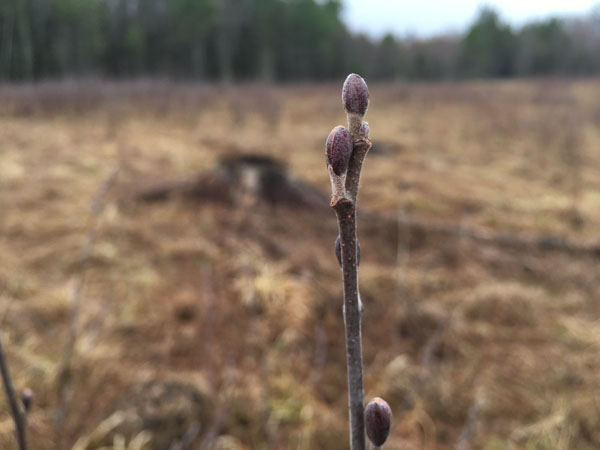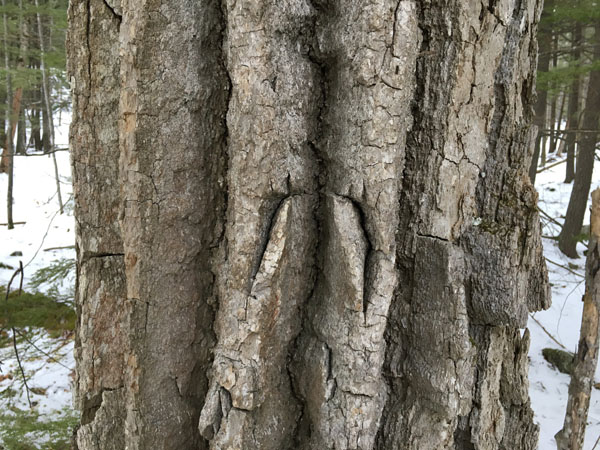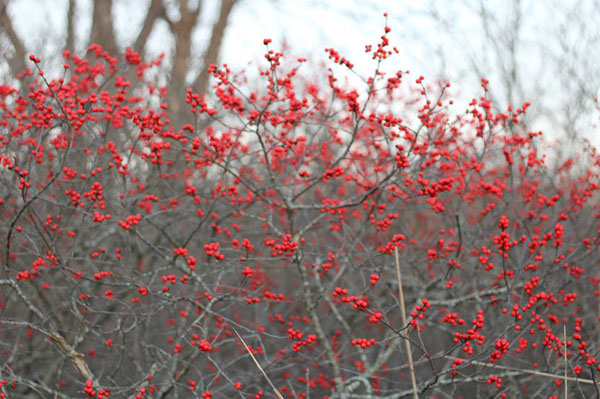Mind Your B’s to Identify Winter Trees
Winter seems like a lousy time to identify trees and shrubs. Without leaves to look at, things definitely get a little difficult, but with a few tricks, and maybe a good book in hand, you can up your botany game and learn to identify trees and shrubs without leaves!
For winter tree and shrub identification, it’s all about the three B’s: Branching, buds and bark.
Why might you need to identify trees and shrubs in the winter? Apart from impressing your friends and neighbors, landowners make many management decisions in winter. The frozen ground reduces the impact of heavy machinery, making in an ideal time for a timber harvest or wildlife habitat management. Knowing what trees and shrubs are on your land can help guide management.
Branching
Trees and shrubs have one of two branching patterns. Either they are opposite, with twigs coming off a branch opposite one another, or they are alternate, with twigs alternating up the length of the branch (see photos). Observing the branching pattern can narrow down the type of tree or shrub you’re looking at. The following families or groups of native trees and shrubs have opposite branching:
- Maple trees
- Ash trees
- Horse chestnut tree
- Dogwood trees/shrubs
- Viburnums (arrowwood, maple-leaf viburnum, nannyberry, etc.)
- Elderberry
Opposite branching pattern on a maple branch.
Alternate branching pattern on an oak twig.
Buds
Buds come in all different shapes and sizes and can help identify a species of tree or shrub. Are the buds pointy or rounded, long or short, do they hug close to the twig or point far off to the side, or do they even have buds at all? Observing the bud (or lack of bud) will help narrow down what you’re looking at.

The buds of speckled alder are “football-shaped” and sit up off the branch on a stalk.
The relatively large, stout bud of the shagbark hickory is distinct.
The buds of this very young black birch tree cling to the twig.
If you break a black birch twig, it has a strong aroma of wintergreen.
Bark
Bark is another great tool to use in winter when identifying trees in particular, but also shrubs. The texture, color and even smell of bark can help with identification. However, keep in mind that bark can look quite different depending a tree’s age, even within the same species. The photos below show some of the variation you might see in bark.
Red oak bark often has red coloration within
the fissures of the bark, especially in older trees.


As the tree matures, the bark begins to show more of the characteristic peeling, or shag, for which the tree got its name.
Other Winter Tree and Shrub ID Clues
Beyond the three B’s, here are other clues that help with winter tree and shrub identification:
Fruit – Some trees and shrubs hold onto their fruit into the winter, such as the rosehips or winterberry.

Leaves – If there isn’t snow on the ground, take a look under the tree to see if you can find leaves that might help you narrow down your options. Some trees also hold their leaves in winter, such as the young beech tree.
Books for Winter Tree and Shrub Identification
There are many books to help you learn more about winter tree and shrub identification, but here are a couple to get you started:
Winter Tree Finder: A Manual for Identifying Deciduous Trees in Winter (Eastern US) by May T. Watts and Tom Watts
Bark: A Field Guide to Trees of the Northeast by Michael Wojtech
Fruit Key and Twig Key to Trees and Shrubs by William M. Harlow
